28-Days-to-Lean Meal Plan
With the right plan and the right discipline, you can get seriously shredded in just 28 days.
Read article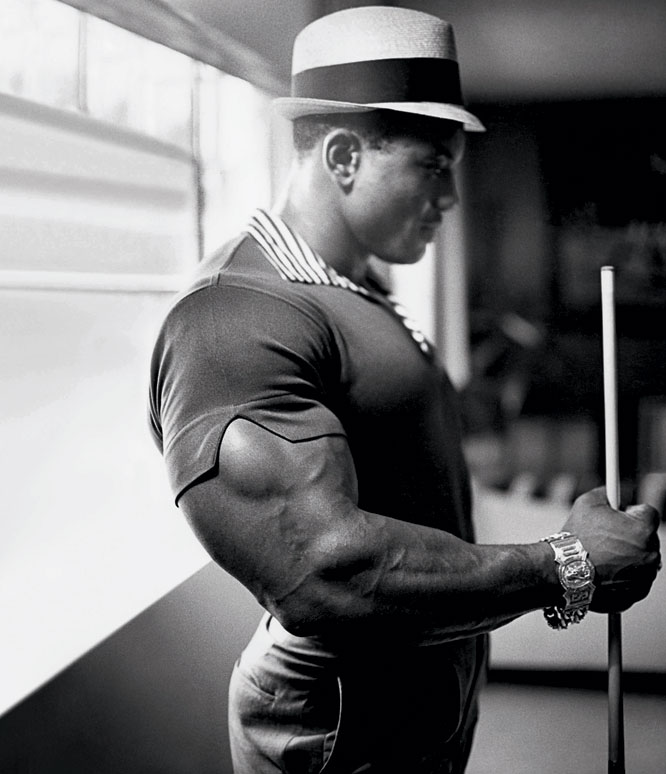
"Can I please speak to Sergio?"
The strains of Latin-influenced music nearly drowned out my request.
"Which Sergio?" barked the voice on the other end.
Is this a quiz? I wondered. Surely it was obvious that I was asking for Sergio Oliva, considered by many to be history's greatest bodybuilder. Then I remembered that his son—who, as an infant, Sergio "The Myth" Oliva had held aloft onstage at the 1984 Mr. Olympia before a cheering New York audience—is also named Sergio.
"Senior," I replied confidently.
"Speaking," the senior Oliva responded.
I was now conversing with the man whose physique blew apart the previously bulletproof confidence of Arnold Schwarzenegger on the occasion of their first onstage meeting nearly 35 years ago.
"My name is Shawn Perine. I'm a writer with FLEX maga—"
"Wait a minute," the Myth interjected as he adjusted the volume on his stereo. "Now what do you want?" He sounded a little put off, which I reasoned was understandable, considering I just interrupted what had probably been a perfectly relaxing evening.
"I'd like to interview you for a feature article on your bodybuilding career." I planted my thumb squarely over the record button of my microcassette recorder and awaited the outpouring of tales, reflections and reveries.
The irony that Sergio Oliva was born on the fourth of July, 1941 is lost on no one who knows the man or his reputation. Throughout his six decades, Oliva has shown nothing if not a burning desire for his own independence. But when Fidel Castro's opposition movement overthrew the Fulgencio Batista Cuban government in 1959, Oliva found that his homeland was no longer a place where personal freedoms could be savored.
A prodigiously gifted athlete from childhood, Oliva realized that his involvement in state-sponsored sports could be his ticket to, if not freedom itself an escape from the stifling confines of the Cuban working class. Blessed with an almost preternatural combination of strength, speed and flexibility, Oliva wisely decided to channel his efforts into Olympic-style weightlifting. Not surprisingly, he took to the sport immediately and, by age 20, he was Cuba's top lifter. For Cuba, Oliva’s participation in international competition signified a lock on yet another weightlifting gold medal. For Sergio Oliva, a man of fiercely independent spirit trapped in a repressive system, weightlifting contests would mean being able to say good-bye—possibly forever—to the only home he'd ever known.
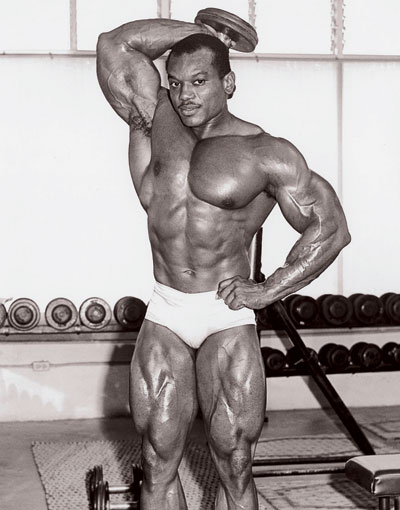 TOTAL RECALL
TOTAL RECALL"No. I can't do an interview now," Sergio rasped.
Uh, waiter? Check, please. I quickly regrouped, redesigning my game plan midstream.
"Oh, well, it doesn't have to be right now. It could be anytime. You let me know and I'll call you, or even come to Chicago to meet with you. Undoubtedly, he could hear the rising tension in my voice. If straws had been handy, I would have grabbed at them.
There was a pause. "I'll tell you what," he replied in his thick Cuban accent, "I'll talk to my manager over the weekend. Call me Monday and I'll give you an answer then. Good-bye."
Dutifully, I called the Oliva household back that Monday. Not unexpectedly, I was greeted by an answering machine, just as I would be the following two days, with no response. Apparently, Oliva was no more interested in rehashing his bodybuilding glory days than he would be in going back to Cuba to live under Castro.
Twenty-one-year-old world-class weightlifter Sergio Oliva knew that the occasion of the 1962 Central American and Caribbean Games in Kingston, Jamaica might be his last best chance to escape Castro-controlled Cuba. Oliva and other members of the Cuban weightlifting team walked offstage during the contest, they ran for safety. They were granted political asylum and, more significantly, their freedom.
Oliva emigrated from Jamaica to the United States; first to Miami, where he performed odd jobs ranging from TV repair to unloading trucks, and then he made his way north to Chicago in 1963.
It was at Chicago's Duncan YMCA that the weightlifter was introduced to the sport of bodybuilding by top local bodybuilder Bob Gajda (the man who would become 1966 Mr. Amen ). Gajda recognized the young man's incredible physical potential and took him under his wing. As predicted, Oliva's muscles ballooned immediately under the unique stresses of a bodybuilding regimen. He took to bodybuilding as an eagle to soaring, and by the end of the year had won his first title, Mr. Young Chicagoland.
In no time, Oliva's physique and reputation had grown such that those in the know were mentioning him in the same breath with names like Larry Scott, Chuck Sipes and Bill Pearl.
Despite the overwhelming physical superiority he brought to the stage in those early years, the uber-Cuban found winning titles within the Amateur Athletic Union (AAU) to be inexplicably difficult. Indeed, it was his inability to take the AAU's most coveted title, Mr. America, against very un-uber competition that drove him into the open arms of the IFBB, and on a quest to become the all-time greatest bodybuilder.
"Don't feel too bad," FLEX Editor-in-Chief Peter McGough reassured me when I reported that Oliva had been a no-show. "The same happened to me in '94. I never connected with him." My dashed spirits rose, if slightly.
"To find the essence of Sergio, why don't you try interviewing some of his contemporaries? Get their thoughts on the guy. Everyone has a Sergio moment; you'll probably learn more about his life and times by' talking to others anyway. 'Searching for Sergio' sounds like a good title."
Maybe McGough was on to something. By taking the path of least resistance, I could cover my assignment and talk to some other' prominent pros to boot! It was a great idea, and I knew just whom I'd call first: Arnold Schwarzenegger.
Peter continued, "To get you started, I recently asked Arnold about Sergio. I'll send you the transcript."
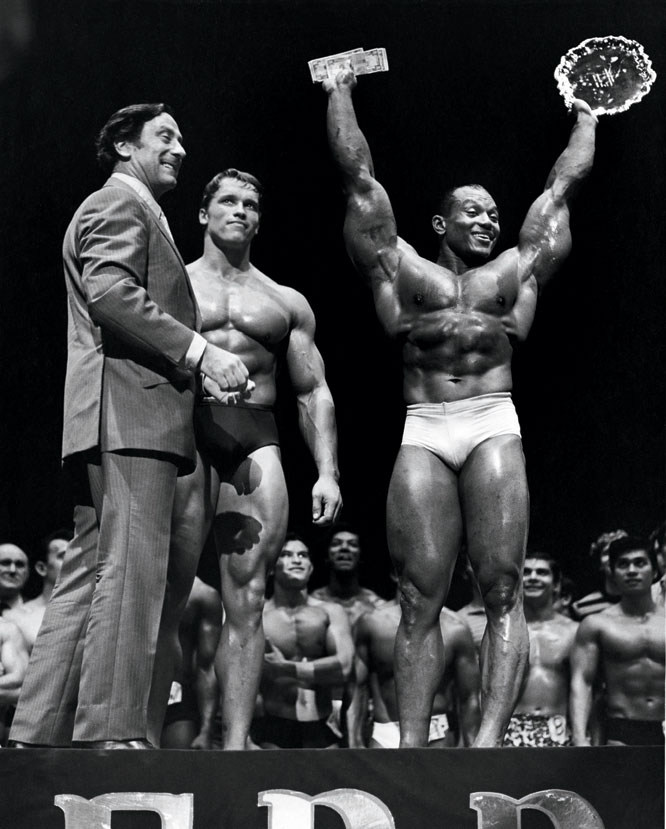
By 1966, Sergio Oliva had had enough of the vicissitudes of the AAU and decided to turn professional by joining the IFBB. IN short order, he won the 1966 Mr. World and the 1967 Mr. Universe titles and, finally, with little resistance, 'the 1967 Mr. Olympia title. Only four years after getting his start in competitive bodybuilding, Oliva was the undisputed king of the walk. Oliva would go on to defend his Olympia title unopposed the following year. 'It wasn't until 1969 that a challenger to his throne would emerge, in the massive, if yet unshaped, form of Arnold Schwarzenegger.
While Oliva handled the Teutonic threat and won his third consecutive Olympia title, the lessons learned in defeat served young Schwarzenegger well the following year. He came back to edge out Oliva in one of the closest results in the sport's history.
Oliva, disappointed but undaunted, redoubled his efforts and returned to the Olympia stage in 1972 bigger than ever and ready to upset the apple cart of then two-time defending Mr. Olympia Schwarzenegger. It was not to be. Whether it was due to politics, as some assert, or Schwarzenegger's uncanny ability to will himself to victory, Sergio "The Myth" Oliva would take the runner-up spot that night in Essen, Germany; despite reaching his all-time best condition.
It was a huge blow to the man, one that would ultimately lead him out, of the IFBB and into relative bodybuilding obscurity for the next 12 years.
Joe Louis had Max Schmeling. Bill Russell had Wilt Chamberlain. Jimmy Connors had John McEnroe. And Sergio Oliva had Arnold Schwarzenegger. These two legends' of bodybuilding confronted one another onstage on four momentous occasions: the 1969, '70 and '72 Mr. Olympia contests, and the 1970 Mr. World. Sergio was victorious in their first meeting, but he lost the next three close decisions' to his Austrian rival.
It only makes sense that any exploration into the man behind the Myth, should begin with the insights of his longtime friend, fan and rival. Arnold Schwarzenegger. Here's what he had to say.
A few months prior to my first Olympia [1969], I went to Chicago to train with Sergio for a week at Duncan YMCA. I wanted to see how he trained, what he ate, what made him tick.
He was really a sweetheart of a guy, a great host. I stayed at a hotel, and he invited me over for dinner at his house all 'of the time, even though he knew that, three months later we'd be onstage together—me trying to take his title away.
At the '69 Olympia, I looked at him and looked at myself, and thought, well you know, this is going to be his year. I didn't stop posing because of that, but I knew there was no way I could win. He was just too much. If they had given me the title that night, I would've handed it back to him. I was very happy for him to win 'cause I was in the best shape of my life. I did everything I could, but he was better … you know, it was that simple.
I always felt very lucky when I would beat him because; he was just so enormous and so unbelievable…. I have great, great admiration for him his personality, his work ethic, the look, everything. There will never be another guy like him. That I can guarantee. He was the original.
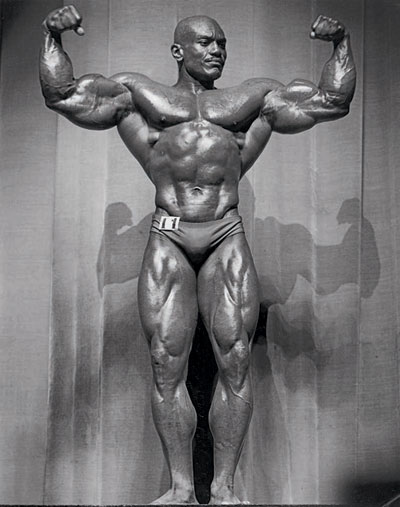 DAVE DRAPER: "THE SS SERGIO"
DAVE DRAPER: "THE SS SERGIO"In the mid-to-late 1960s, only a handful of men could stand next to Sergio Oliva without being dwarfed, Dave Draper was one. At 6' and 230 pounds, he was known as the Blond Bomber, for his sun-bleached hair, all-American good looks and 21"' arms. The first of Draper's two onstage meetings with the Myth was at the 1967 Mr. Olympia.
Backstage, Sergio wore a full-length white robe of a canvas like utility fabric, giving it the appearance of a spinnaker from him a large sailboat. It hung loosely on with only his mighty and well-carved calves on display; impressive suggestions of what else might be pulsating beneath the billowing tarpaulin. The SS Sergio.
He was pumping up for the prejudging when I arrived from the airport and his spirits were high. I was sinking from jet lag and Sergio's sails were full of wind. He greeted me like an old friend, gave me a quick tour of the facilities and assured me of what a good time we'd have.
I remember that Sergio in his structure and movements resembled a creature yet to be named, an awesome and appealing cross of racehorse, panther, homosapien and gorilla: unusually proportioned muscular thickness fully possessing symmetry, grace and defining lines—sleek, yet overpowering.
Among the numerous landmarks in Mike' Katz's storybook life, his 1970 IFBB Mr. America win is one of the more significant. Getting there was an uphill battle over the course of several years. But that hill nearly became Mount Everest only hours before his final assault on its peak. “Before I won the Mr. America, I had competed in it a few times, but 1970 seemed to be my year. Suddenly Sergio decides he not only wants to go into the Olympia, he wants to enter the America, too.”
Well, first of all, he was a pro and the America is supposed to be amateur, and I don't think he had his American Citizenship…. So finally, to dissuade him from going in, they said, "We'll give you a trophy and an honor but you can 't go in."
I was saying to myself, I gotta deal with him going into the show? I'd spent four years. It was my year unless something weird happened, and now Oliva wants to go from the Olympia to the Mr. America?
Sergio was the ultimate freak. But beautiful. Not ugly. Not lacking symmetry. His physique was comparable to guys of today, like Coleman.
I remember one time I was in Arnold's third-floor walkup fiat in Santa Monica and there was this envelope addressed to Arnold. Arnold opens it up and his mouth drops. I never saw Arnold quite as—I don't know what the word would be—motionless. He’s just looking at this picture, and I was like "What are you looking at? Say something!" Well, it was this picture of Oliva, and he looked like he had 35" arms; and it said something like "See you in New York." This was July or August, and the show was in October.
Arnold said, "The sonofabitch must have done something to the photo!" He figured it was some magnification trick. His arms looked three times bigger than his head. (Laughs.) So I said to Arnold, "He's just trying to mess with your mind. Don't worry about it."
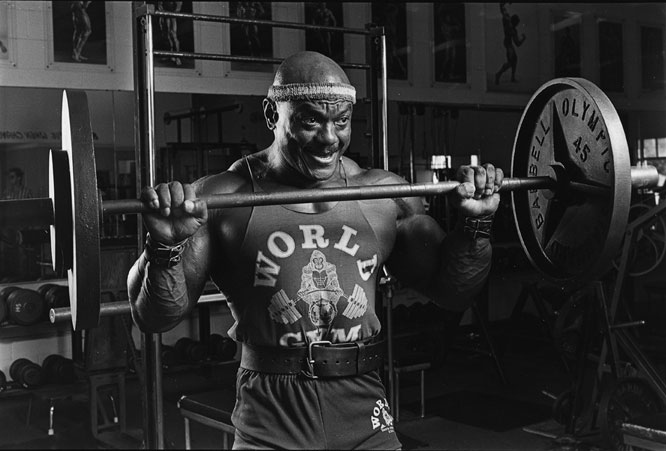
In the history of bodybuilding, there may never have been a straighter shooter than the 52 Giant Killer, Danny Padilla: On more than one occasion, he has let his feelings be know on matters ranging from contest officiating to IFBB policy, consequences be damned. If ever I were to get an objective yet brutally honest appraisal of Sergio Oliva, it would be from Padilla.
I'll never forget, one time Arnold and I went to a NABBA show at the Shrine Auditorium in the mid-'70s to see Kal Szkalak and Sergio pose down. Arnold really loved Sergio's physique. He used to say, “The guy's incredible." And here was Arnold, the greatest bodybuilder of all time in terms of production, and 'aesthetics, and he' would say, "C'mon, we're gonna go see Sergio!"
To me, Sergio was phenomenal. And he was as strong as he looked. He had awesome power, was very athletic and very flexible, and I think that's why he had this incredible physique. The guy was a bruiser.
I think, even by today's standards, Sergio would beat everyone. And I'm not just saying that because I'm an old-timer. You couldn't appreciate Sergio until you saw him, at his, best. When Sergio hit a most-muscular shot … his traps … they'd almost cover his head. He looked like a turtle. And his arms were so huge, but he'd turn around and throw a calf out and throw his arms up and rotate his wrists, and you'd see the forearm—and the triceps, and the deltoids, and the center of his back, and the huge calves’ with the huge hams. The guy was just phenomenal.
When you saw him, you would freak out. It was unbelievable. Physique wise, I think Serqio was 20 years ahead of his time.
From 1973 to 1983, Sergio Oliva's moniker became more trenchant than ever. He seemed more myth than man to a large part of the bodybuilding community. Out of the IFBB, he competed in Europe in the WABBA amid WBBG organizations. Although always successful, he often faced mediocre competition and on occasion would sometimes find them such a small threat to his title chances that he would compete in less-than-stellar shape himself.
In 1984, a new wave of Oliva mania spread through the body building world as the Myth made his peace with IFBB and returned to his rightful place on the Olympia stage.
Then a Chicago police officer and a new father, 43-year-old Oliva could manage only an eighth-place finish competing against men who grew up idolizing him. Although the version of Sergio Oliva seen that November evening on the Madison Squares Garden stage was not quite the mythical beast of yore, his presence alone electrified the sport of bodybuilding in a way not felt since his monumental confrontations with Arnold. Truthfully, to his fans, it didn't matter whether he took first or last, whether he was in shape or out. What mattered most what Sergio Oliva, the Myth, had risen from the depths of our collective memories to grace us with his awesome presence again.
Oliva competed one more time, finishing eighth in the 1985 Mr. Olympia. In 1986, his wife shot him in a domestic dispute, and he sustained chest and abdominal wounds. He never competed again.
Even now, 18 years after Oliva's final competition, that electricity still surges at shows, in gyms, on Internet bodybuilding message boards—anytime and anywhere his name is invoked by those in the know.
I suspect it always will.
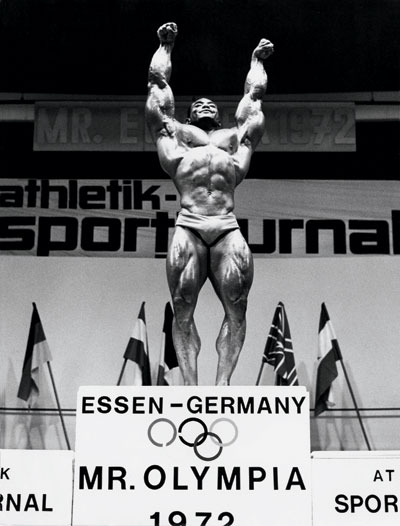
My final interview was, appropriately, with the bodybuilder who may have formed the closest relationship of all with Oliva: Casey Viator.
It was while a teenage Viator was working for Nautilus at Arthur Jones' De Land, Florida, compound that the two first met. Like everyone else, Viator was instantly awestruck by the Cuban giant. Unlike anyone else, he would find both a friend and a mentor in Oliva, and a bodybuilding partnership was forged that would prove highly motivational for both men.
I was 19 when I met Sergio and was instantly struck by his massiveness and small waist. I, asked many questions about his training and diet. He took me under his wing and helped me for many years.
Sergio wasn't used to HIT. (high-intensity training) when he first came to visit the Nautilus compound in the early '70s. He would start his training by taking off all his jewelry, and setting it on a bench for all to see. It looked like a jewelry store. Then the cummerbund would come off, and we would get into fast and heavy training.
By the time the session was over, Sergio was tired and sucking a lot of air. He would put all the jewelry and the cummerbund in his workout bag and "we'd leave the gym soaking wet. I asked him why he didn't put his gold back on after training and he said, "I first have to get my head back on properly!" What a gentleman.
We got him caught up to speed with HIT training later, and he trained as fast and as hard as we all did and made great gains. He loved to learn new things about training and didn't have an ego that blocked his learning ability.
His mass and symmetry dominated bodybuilding for many decades; he can even be compared with the champs of today. He was way ahead of his time. In my opinion, he was the best Mr. Olympia ever. What a champion.
The day after our initial interview, Casey Viator e-mailed me the following message: "This is, the best shot ever seen of Sergio. There is not a pro today who can match it. NO ONE!"
Attached was the now famous shot of Sergio performing his victory pose onstage at the 1972 Mr. Olympia in Essen. It seemed appropriate that Viator should send me that particular photo to exemplify Sergio Oliva's greatness.
Although Oliva finished second in that contest, of all the photos taken of the Myth over the years, it has always been my personal favorite.
In it, he stands tall upon the rostrum at his absolute physical peak with arms raised high above his head and every muscle flexed to perfection. With his tree-trunk legs, waspish waist, flaring lats and elephantine arms, he appears impossibly huge yet incredibly elegant, almost, dare I say, beautiful.
More than his staggering physical appearance, though, it is his facial expression that sets this picture apart from all others for me. A broad smile that would make the Cheshire Cat envious stretches across his chiseled visage. It's as if he's thinking to himself, take it all in while you can, world, because it's gonna be a long time before you'll see anything like this again.
The truth is, Sergio, we're still waiting.
This article first appeared in the August 2003 issue of FLEX.